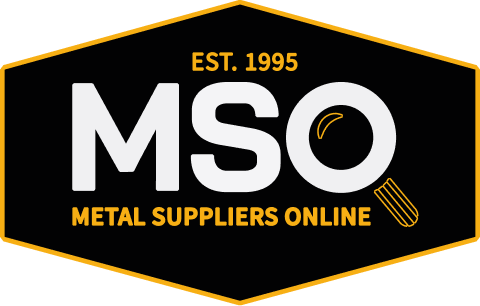Back To Browse
Stainless Steel
Stainless Steel 15-7
Annealing Procedure
1900 F (1038 C) for 1 hour, rapid cooling. Also known as " solution treating."
Applications
Retaining rings, springs, diaphragms, aircraft bulkheads, welded and brazed honeycomb panels and other uses requiring high strength at elevated temperatures.
Cold Workability
Cold work is restricted only by this alloys high initial yield strength. The alloy is not favored for cold working but can be moderately formed.
Heat Treatability
CONDITION C - Results from heavy cold working of solution treated material. CONDITION CH900- Heat Condition C material to 900 F(482 C), hold for 1 hour, air cool. CONDITION A1750- After fabrication heat solution treated material to 1750 F(955 C), hold for 10 minutes, cool rapidly to room temperature. CONDITION R100- Within 1 hour of treating to Condition A1750, cool to -100 F(-73 C) and hold for 8 hours. Air warm to room temperature. CONDITION RH 950- From Condition R100 material, heat to 950 F( 510 C), hold for 1 hour, air cool. CONDITION T- After fabrication, heat to 1400 F (760 C) and hold for 90 minutes. Within 60 minutes, cool to 55 F (13 C), and hold for 1/2 hour. CONDITION TH1050- From Condition T, heat to 1050 F (565 C) and hold for 90 minutes, air cool
Hot Workability
This alloy works well in all common hot working procedures. Material should be annealed after hot working for best heat treat response.
Machinability
Tough and gummy, this alloy responds best to machining in the hardened conditions. Chip breakers are suggested.
Principle Design Features
This alloy is a semi-austenitic precipitation hardening stainless steel. It combines moderate corrosion resistance with high strength and hardness at operating temperatures up to 900 F.
Weldability
Readily welded by most of the common arc and resistance methods. Preheating and post weld annealing is not required in this alloy. Avoid inert gas shielding to prevent oxidation of aluminum.
Known Forms
Bar-Hollow
Closed Die Forgings
Flanges
Flat Bar
Foil
Forgings-Discs
Hexagon Bar
Open Die Forgings
Pipe-Seamless
Pipe-Welded
Plate
Round Bar
Seamless Rolled Rings
Sheet
Sheet-Perforated
Square Bar
Strip
Tube-Rectangular
Tube-Round (Seamless)
Tube-Round (Welded)
Tube-Square
Wire Rod
Wire-Round
Wire-Shaped
Wire-Welding
Coil
Contour Rings
Fittings
Forgings-Upset
Mandrel Rings
Shafts
Shapes-CD
Shapes-Extruded
Tube-Hexagonal
Tube-Octagonal
Welded Rings
Additional Data
Specifications
5520,5657,A564 (632),A579 (632),A693 (632),A705 (632),1.4532,1.4574,S-8955,S15700Dismiss
Chemical Elements
| Aluminum | 0.75 - 1.5 |
| Carbon | 0.09 max |
| Chromium | 14 - 16 |
| Iron | Balance |
| Manganese | 1 max |
| Molybdenum | 2 - 3 |
| Nickel | 6.5 - 7.75 |
| Phosphorus | 0.04 max |
| Silicon | 1 max |
| Sulphur | 0.03 max |
Physical Properties
Density: 0.282lb/in³
Specific Gravity: 7.804
Specific Heat: 0.11BTU/lb·°F
Thermal Conductivity
| Condition | Temperature | Conductivity |
|---|---|---|
| TH 1050 | 70 °F | 10.4 W/m·K |
| TH 1050 | 200 °F | 11.2 W/m·K |
| TH 1050 | 600 °F | 13.6 W/m·K |
| TH 1050 | 1000 °F | 15.8 W/m·K |
| RH 950 | 70 °F | 10.4 W/m·K |
| RH 950 | 200 °F | 11.2 W/m·K |
| RH 950 | 600 °F | 13.3 W/m·K |
| RH 950 | 900 °F | 15 W/m·K |
Thermal Expansion
| Condition | Min | Max | Expansion Coefficient |
|---|---|---|---|
| TH 1050 | 70 °F | 200 °F | 6.1 µin/in/°F |
| TH 1050 | 70 °F | 600 °F | 6.1 µin/in/°F |
| TH 1050 | 70 °F | 1000 °F | 6.6 µin/in/°F |
| RH 950 | 70 °F | 200 °F | 5 µin/in/°F |
| RH 950 | 70 °F | 600 °F | 5.6 µin/in/°F |
| RH 950 | 70 °F | 1000 °F | 6.1 µin/in/°F |
| Annealed | 70 °F | 200 °F | 8 µin/in/°F |
| Annealed | 70 °F | 600 °F | 8.5 µin/in/°F |
| Annealed | 70 °F | 1000 °F | 9.4 µin/in/°F |
Find the metal you're looking for today.

